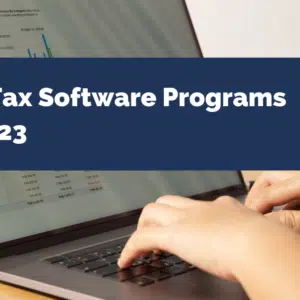I heard an analogy the other day from a fellow parent:
“Cleaning the house with small children around,” she said, “is like brushing your teeth while eating Oreos. It’s really hard to make progress!”
She’s right, as anyone with small children knows. But as a financial advisor, I immediately applied her analogy to another predicament many parents face: Saving money when you have kids in college.
It’s hard to do. Maybe not as hard as brushing your teeth while eating Oreos, but it’s on up there, especially if you have two or three — or more! — children in college at once.
Even a state school with more manageable tuition could also require thousands of dollars worth of books, supplies, and technology fees per student.
And all these expenses come at a time when many of us need to be thinking more about retirement.
Table of Contents
Enter the American Opportunity Tax Credit
Fortunately for many parents, Uncle Sam can help through the American Opportunity Tax Credit, which has been renewed for the 2019 tax season (2018 tax year).
With this tax credit, which got its start during the Great Recession, you could claim $2,500 per student in the form of a tax credit when you file.
Now, like anything else the Internal Revenue Service administers, the American Opportunity Tax Credit (AOTC) can be hard to understand.
So let’s take a close look and try to get at the nuances of this tax credit.
Who’s Eligible for the American Opportunity Tax Credit?
Like most tax credits, your income will help determine your eligibility for the American Opportunity Tax Credit, so let’s look at those simple numbers first.
- Individuals who earned up to $80,000 could qualify for the full credit.
- Families filing jointly could have earned up to $160,000 and still qualify for the full credit.
- You can still qualify for part of the credit if you earned up to $90,000 as an individual or $180,000 as a family.
If you meet these income requirements, you could get the tax credit on any of your dependents who meet the additional requirements we’re about to discuss. Or, if you’re a student, you may be able to claim the credit yourself.
However, students who are dependents on someone else’s tax return cannot claim the credit for themselves.
Of course, meeting the income requirement just keeps you in the conversation. There’s a lot more to consider, including:
How Much Do You Have to Spend?
To claim the full $2,500, you’d have to spend at least $4,000 on qualifying expenses.
Here’s why: the tax code says the credit covers 100 percent of the first $2,000 you spend and 25 percent of the second $2,000.
Altogether this equals $2,500, but only if you spend enough to reach the threshold. If you spent only $3,500 on qualifying expenses, you could claim only $2,000 worth of the tax credit because you didn’t spend that second $2,000.
Kind of complicated, right? But, unfortunately, with the rising cost of higher education, spending $4,000 shouldn’t be hard to do.
What Are Qualifying Expenses?
To claim the credit, the money you’re spending must be going toward a degree at a qualifying, accredited institution.
If the university you’re paying sends you an IRS 1098-T form in January, chances are you meet the school and degree qualifications.
To be certain, though, you can search for your school in this database.
The student must also be attending school at least half-time during the year. Different schools define a full-time load differently, so check with the registrar’s office if you have questions.
Does the Credit Cover Books and Supplies?
Yes, the IRS considers books, technology, and other supplies as qualifying expenses covered by the tax credit.
You may need to prove the school required you to purchase the supplies, though, which is important to remember if you’re buying an iPad, a laptop, or some other expensive gear.
The credit does not reimburse you for:
- Your dorm room or other living arrangements.
- Your dining plan or other money spent on food and entertainment.
- Your parking pass or any other transportation expenses.
- Your medical insurance, even if it’s billed through your school.
If you’re claiming the credit on one or more dependent students, be sure to keep good records for each student so you can show how you spent your $4,000 if needed.
Will the Credit Pay for a Second Degree?
You can claim the American Opportunity Tax Credit on one student for up to four years. The four years do not have to be consecutive.
If the student already has a four-year degree, however, he or she can’t qualify for the tax credit.
So if you’re going back for a second bachelor’s degree or a graduate degree, the credit won’t help you.
The IRS’s Lifelong Learning Credit, a similar tax credit, may work for you, though.
Can I Claim the Credit on Multiple Children?
Yes, as we’ve already alluded to, you can claim the American Opportunity Tax Credit on multiple dependents as long as they all qualify.
So if you have three children in college at once, you could save up to $7,500 on your taxes ($2,500 for each student).
Again, it’s important to keep clear and separate records for each student just in case the IRS sends a letter asking you to clarify how you spent the money.
More Questions About Claiming the AOTC
There’s a reason tax preparation is a profession all its own. Even the simplest tax credits can get more complicated the more you poke at them.
Here are some more common questions about the American Opportunity Tax Credit:
What If We Paid With Student Loans?
If you’re using student loans to help finance your education or your dependents’ education, you can still claim the American Opportunity Tax Credit.
This is true because the student loan borrower will eventually have to repay the loans, presumably using earned income.
In this case, though, I’d recommend using the tax credit to get started paying back those loans if possible. And remember, despite reports to the contrary, you can still deduct student loan interest on your 1040.
Money from grants or scholarships that do not have to be repaid will not qualify as expenses through the AOTC.
What About 529 Money?
Money you withdraw from your tax-preferred college savings plan, or 529 plan, cannot be claimed again through the American Opportunity Tax Credit.
Why? Because that money has already received special tax treatment and can’t go back for seconds.
This doesn’t mean you still can’t use both strategies — the tax credit and the 529 savings plan. Just be sure you spend at least $4,000 more than you’ve withdrawn from the 529 and be prepared to show the IRS how you spent from each source in case they ask.
Possible solution:
Is the AOTC Refundable?
Is the AOTC Refundable?
What happens when you pay more taxes than you owe? You get a refund!
When the IRS sends refund checks — or these days, when it releases money directly into your bank account — it can feel like Christmas all over again.
But it isn’t always this simple when a tax credit pushes you into the black. Some credits qualify for a refund, while others don’t.
The American Opportunity Tax Credit seeks the middle ground. You can get up to $1,000 of the maximum $2,500 tax credit refunded. The full $2,500 credit applies only to taxes you owe.
So if you’re already paying a lot more than you owe in taxes and looking forward to a huge refund, this tax credit may not help you as much as it would if you owed taxes.
How Do You Claim the AOTC?
Along with making sure your school and your degree program qualify and that you spent the money on tuition, supplies, or another qualifying expense, you’ll also need to use IRS Form 8863.
The same form also works for the Lifelong Learning Tax Credit, so be sure you’re filing for the correct credit.
Most popular tax software platforms, whether they’re online or in the form of a desktop application, should populate this form for you, assuming you follow the guided prompts.
If you’re hiring an in-person tax professional, he or she will know exactly what to do. You can help speed things along by collecting receipts showing how you spent up to $4,000 per student.
Chances are you won’t have any trouble from the IRS, but if you do, you’ll be glad you kept records showing that your expenses were required by the university and that the student claiming the credit attended at least half of a full academic load.
You can also clarify matters by including your university’s tax identification number on your Form 8863.
Find the tax ID number on your Form 1098-T, which the school should have sent in January. You can also call the college’s business office and ask for the number.
One more thing to know: Any student who has been convicted of a state or federal felony won’t be able to qualify for the American Opportunity Tax Credit.
Bottom Line: A Little Work Can Go a Long Way
As you can tell, claiming up to $2,500 in tax credits isn’t as easy as opening a package of cookies, but it’s worth it if you can save an extra $2,500 per college student this year.
That money can go a long way toward helping you meet your savings goals or toward helping reduce your debt.
In 2016, which is the most recent data on record, the IRS reported taxpayers claimed about $16 billion in education-related tax credits and deductions.
If that money U.S. taxpayers can do it, you can, too.







